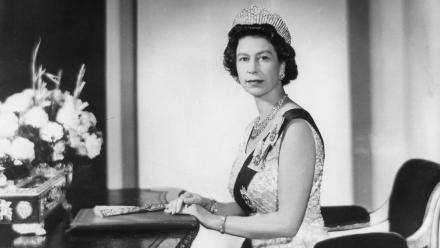Age and education key to election win
Voters' age and level of education were the two most important factors in deciding the latest federal election, new analysis from the Australian National University (ANU) shows.
The findings - taken from a survey of more than 3,500 voters and released ahead of a major symposium to be held at ANU on 24 June - also show Australians feel more positive about the direction of the country following Labor's win.
The joint ANUpoll/Comparative Study of Electoral Systems survey compared Australians' voting intentions between April and May 2022, as well as how people voted in this year's federal election and the 2019 election.
Co-author Professor Nicholas Biddle said age and education were the two key demographics "driving Labor's path to victory" at the ballot box.
"We found age and education were the two key areas where the Coalition government lost the most support in this year's election," Professor Biddle said.
"More than one in three voters aged under 55, 34.9 per cent, who voted for the Coalition in 2019 ended up voting for someone else. Around one in five, 21.1 per cent, aged 55 or older did the same.
"The Coalition also lost more votes among people with higher levels of education. Around one in three people, 31.0 per cent, who had completed year 12 and voted for the Coalition in 2019 voted for another party in 2022.
"This is in stark contrast to former Coalition voters who had not completed year 12. We found only 14.8 per cent of this group changed their vote in 2022.
"Education, and particularly high school education, really matters when it comes to understanding this election result."
The Coalition also lost more voters in capital cities, with 30.7 per cent of former Coalition voters living in capitals changing their vote in 2022. This is compared to 23.0 per cent of former Coalition voters living outside capital cities who voted for another party.
Professor Biddle said the survey also found Australians are feeling more satisfied with the direction of the country after the election.
"We found a very large increase in satisfaction with the direction of the country, from 62.4 per cent of Australians being satisfied or very satisfied in April 2022 to 73.3 per cent in May 2022," Professor Biddle said.
"In fact, this is one of the highest levels of satisfaction we have seen since the start of the COVID-19 pandemic and the black summer bushfires of 2019/2020.
"In contrast, levels of satisfaction in April 2022 were some of the lowest, if not lowest, we've seen over the same period.
"Not surprisingly, there were quite different changes in satisfaction with the direction of the country depending on who the person voted for in the election.
"For those who voted for the Coalition, satisfaction went down from to 86.7 to 76.8 per cent. For Labor voters though, satisfaction went up from 58.2 to 79.1 per cent and for Greens voters it went up from 40.8 to 69.2 per cent.
"And for those who voted for another party, which includes the Teal Independents, it went up from 40.0 to 54.4 per cent.
"Most Australians seem satisfied with the election and their decision."
Other key findings from the study include:
- Females were less likely to vote for the Coalition compared to males, but the largest difference in voting patterns by gender was for the Greens (22.5 per cent of females voted for the Greens compared to 16.4 per cent of males).
- Young Australians were more likely to have voted for Labor and substantially more likely to vote for the Greens.
- Coalition voters tended to be older, non-Indigenous, with low education, living outside of capital cities and with a household income that puts them outside of the bottom income quintile.
- Labor voters tended to have high levels of education and lived in capital cities.
- Greens voters tended to be female, young, born in Australia or another English-speaking country and without a trade qualification.
- Those who voted for another party tended to have high levels of education, lived outside of a capital city and had a relatively low household income.
- More than one in 10 voters, 13.6 per cent, made up their mind on election day.
- The majority of Australians voted for the party grouping in May 2022 that they said they would vote for in April 2022, with only 21.9 per cent of respondents changing their voting intention.
- The main reason people changed their vote was because their views about the local candidate changed.
Read the full study online.
More results from the ANUpoll/Comparative Study of Electoral Systems will be presented at the ANU symposium, Realignment or dealignment? Survey perspectives on the 2022 Federal Election with limited tickets still available.


